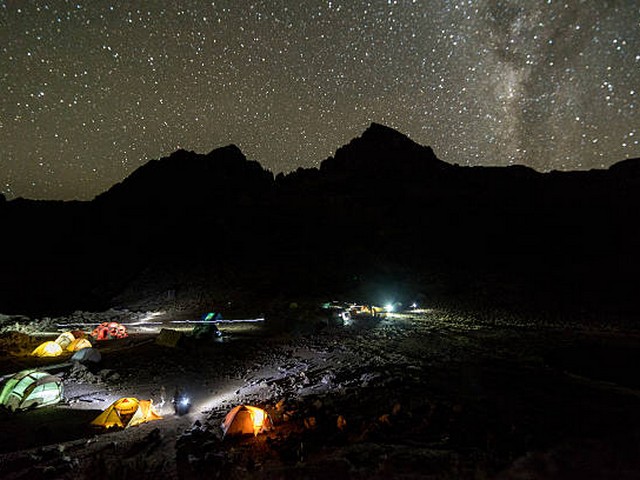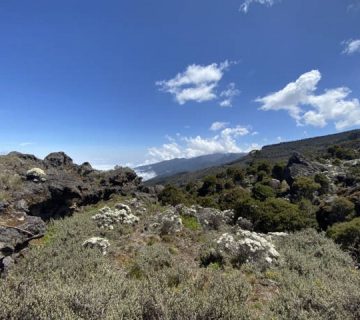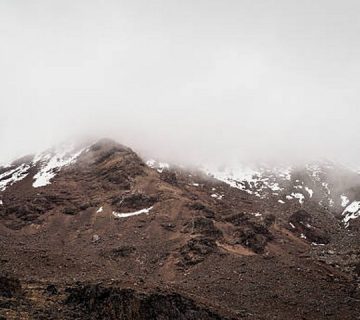How To Prepare Kids For A Kilimanjaro Trek
Imagine standing atop Africa’s highest peak, the majestic Mount Kilimanjaro, with your family by your side, cherishing a moment that will be etched in your memory forever. Preparing your children for such an epic adventure can be just as thrilling as the trek itself. At Kilimanjaro Centre for Trekking and Ecotourism (KCTE), we believe that with the right preparation, your kids can safely and joyfully conquer the "Roof of Africa". In this guide, we will walk you through comprehensive steps to prepare your young adventurers for the journey of a lifetime.
Understanding the Challenge
Mount Kilimanjaro is not just a mountain; it’s a series of ecosystems that range from rainforest to alpine desert to arctic summit. Trekking Kilimanjaro is challenging for adults, and more so for children, who must be prepared physically and mentally. Before delving into preparations, ensure that your child is enthusiastic about the adventure and understands what to expect.
Assessing Fitness and Health
Physical Preparation
Start by assessing and enhancing your child’s fitness level. Kilimanjaro is not a technical climb, but it does require stamina and resilience. Engage in regular physical activities such as hiking, swimming, cycling, or running, ideally six months before your trek. Practice hiking on smaller hills or stair climbing to mimic the trek’s demands. Remember, the fitter the child, the more enjoyable the journey.
Health Checks
Consult with a pediatrician to ensure your child is healthy for the trek. Discuss altitude sickness and its symptoms as children may not always communicate their discomfort. The doctor might provide tips on altitude acclimatization and recommend necessary vaccinations based on travel guidelines.
Training As A Family
Training together not only improves physical readiness but also strengthens emotional bonds. Family training sessions create a supportive environment, boosting confidence and teamwork. These preparatory hikes are the perfect opportunity to teach kids about persistence, nature respect, and outdoor survival skills.
Gear Up For The Summit
Clothing and Equipment
Dressing appropriately is crucial for Kilimanjaro’s varying climates. Invest in good quality, insulated, waterproof, and breathable clothing. Layering is key: include base layers, an insulation layer, and an outer shell. Don’t forget a warm hat, gloves, and UV-protection sunglasses.
Footwear
Proper hiking boots are essential. Choose boots that are comfortable, waterproof, and broken-in to prevent blisters. Pair them with moisture-wicking socks to keep young feet dry and happy.
Backpack Essentials
Kids should carry their own backpack, but keep it light. Essentials include water bottles, snacks, a first-aid kit, sunscreen, lip balm, and a camera to capture memorable moments. Teach your child how to pack and organize their gear.
Mental Preparation
Educate Through Stories and Films
Build excitement and understanding by watching documentaries or reading books about Mount Kilimanjaro. Stories of other young climbers can be particularly inspiring.
Discussion and Encouragement
Talk to your kids about the trek; discuss the scenery they will see, the wildlife they might encounter, and the diverse cultures they will experience. Encourage them to express any fears or concerns. Reassurance can transform anxiety into anticipation.
Choose the Right Route and Season
Selecting a Kid-Friendly Route
At KCTE, we recommend routes like the Marangu or the Machame for families. These routes offer gradual ascents and are well-trodden, making them safer and more comfortable for children.
Best Time to Trek
The best times to climb Kilimanjaro are during the dry seasons: January to mid-March and June to October. These periods provide favorable weather conditions for trekking with children.
Acclimatization and Altitude Sickness
Understanding and managing altitude sickness is critical. Ensure gradual ascent and increase hydration. Watch your child for any signs of discomfort, which can include headaches, nausea, or dizziness. Educate your children on the importance of communicating their feelings.
On The Mountain: Safety and Enjoyment
Keeping Kids Engaged
Keep the trek enjoyable by incorporating games, frequent breaks, and educational talks about the environment. Maintain a slow pace to enjoy the journey without undue exhaustion.
Prioritize Safety
Always follow the lead of your experienced KCTE guides, who are trained to ensure your family’s safety and comfort. They can make real-time decisions and adjustments to the plan based on weather conditions and group health.
Why Trek with Kilimanjaro Centre for Trekking and Ecotourism (KCTE)?
Choosing KCTE means opting for an experienced, family-friendly, and safety-first approach to climbing Kilimanjaro. Our guides are experts in handling young climbers, and our itineraries are crafted to make the adventure accessible and enjoyable for families.
FAQs
What is the minimum age for children to climb Kilimanjaro?
The Tanzanian park authorities recommend children be at least 10 years old to climb Kilimanjaro.
How can I maximize the chances of my child reaching the summit?
Ensure thorough preparation, choose a longer route for better acclimatization, and keep a flexible schedule. Listening to the body’s needs and acclimatizing properly are key.
Are there special considerations for food and water for children on the mountain?
Yes, we ensure all dietary needs are met and provide constant access to purified water. It’s vital to encourage regular eating and drinking to maintain energy levels.
In Summary
Preparing your kids for a Kilimanjaro trek is an adventure in itself. It’s about equipping them not just with the physical prowess to climb but also with the mental fortitude to endure and enjoy the journey. At Kilimanjaro Centre for Trekking and Ecotourism, we are committed to making your family’s expedition to the Roof of Africa safe, enjoyable, and unforgettable. Ready to embark on this extraordinary adventure? Contact us today to book your family’s trek up Kilimanjaro!
Climbing Kilimanjaro with children is not just about reaching the summit; it’s about nurturing a spirit of adventure and resilience in the young ones. Let us guide you to the top!




